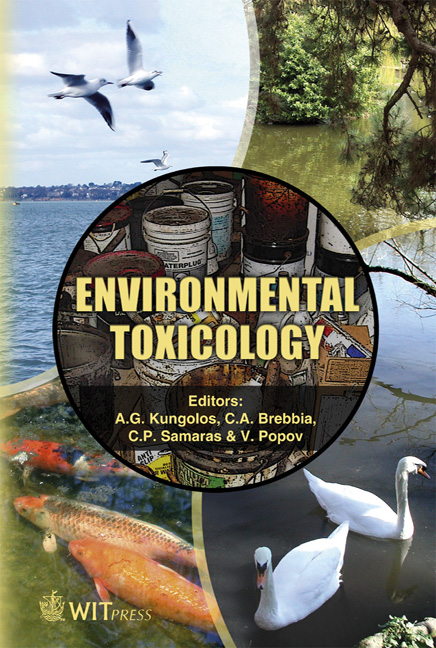Pharmaceuticals And Personal Care Product Residues In The Environment: Identification And Remediation
Price
Free (open access)
Transaction
Volume
10
Pages
8
Published
2006
Size
498 kb
Paper DOI
10.2495/ETOX060131
Copyright
WIT Press
Author(s)
E. Heath, T. Kosjek, P. Cuderman & B. Kompare
Abstract
In this paper we investigate the possible impact on the ecosystems of the active ingredients in pharmaceutical and personal care products (PPCPs). These molecules are in their nature biologically active substances whose effects, once released into the environment, remain unclear. Commonly used drugs and cosmetics have been detected in drinking and surface waters suggesting possible consequences for environment and human health. Considering the possible bioaccumulation in the food chain and chronic toxicity due to a combination effect it is necessary to better understand their environmental fate. Pharmacologically and cosmetic active substances involved in our study were chosen according to their wide application in central Europe and to their suspected toxicity and bioaccumulation (nonsteroidal anti-inflammatory drugs - NSAIDs, sunscreen agents, antiseptics). For isolation and identification of the selected compounds GC-MS procedure has been developed in our laboratory. To determine the presence of PPCP in the Slovene aquatic environment, different water samples (river, potable, well, lake, sea, swimming pool and waste water) were analyzed. The results show that the average PPCP contamination in Slovenian waters is comparable to published results for Central and Western Europe. To understand the environmental fate of these substances we studied the biodegradation paths in controlled conditions using laboratory scale bioreactor facilities. Degradation experiments were made with spiked water samples of different concentrations of pollutants (1µg/L-1ng/L) starting with activated biomass from the active wastewater treatment plant. After 6 months of continuous operation, a steady removal of all observed compounds (NSAID representatives) was achieved (up to 90%). In the future other PPCP representatives will be studied and the reactor configuration will be optimized. Keywords: pharmaceutical, personal care products, NSAIDs, UV filters, antimicrobial, analytical procedure, environmental samples.
Keywords
pharmaceutical, personal care products, NSAIDs, UV filters, antimicrobial, analytical procedure, environmental samples.





